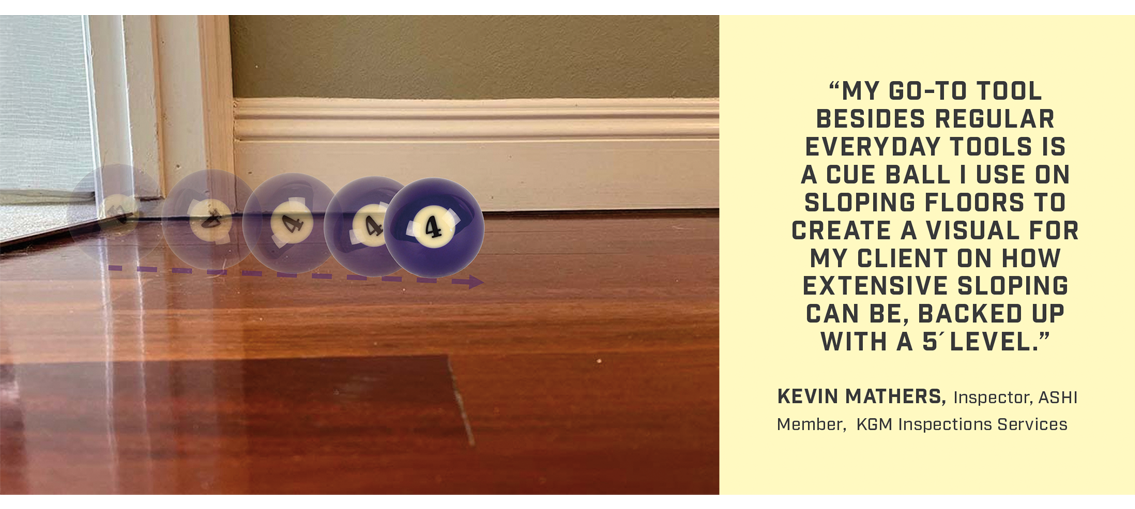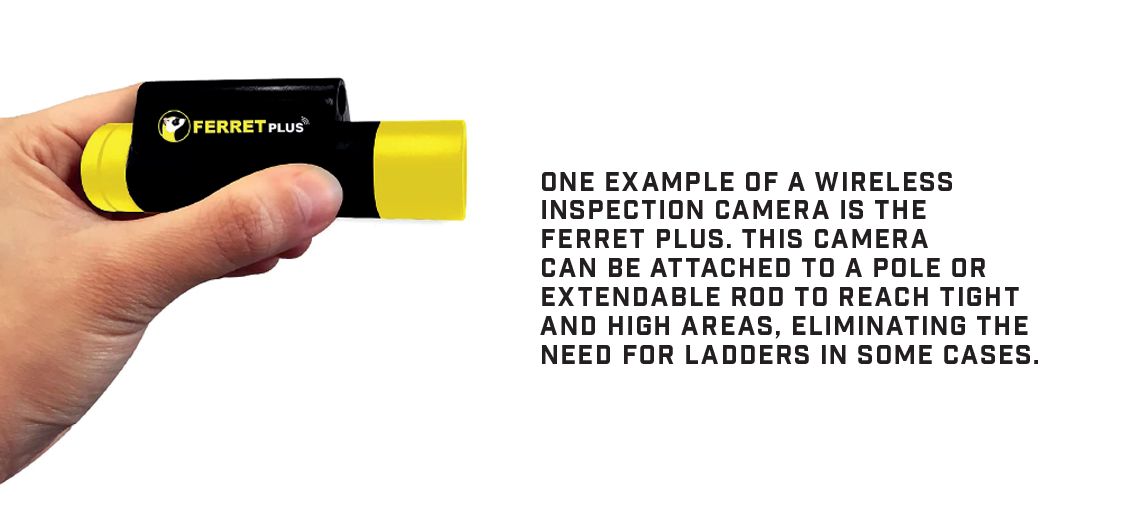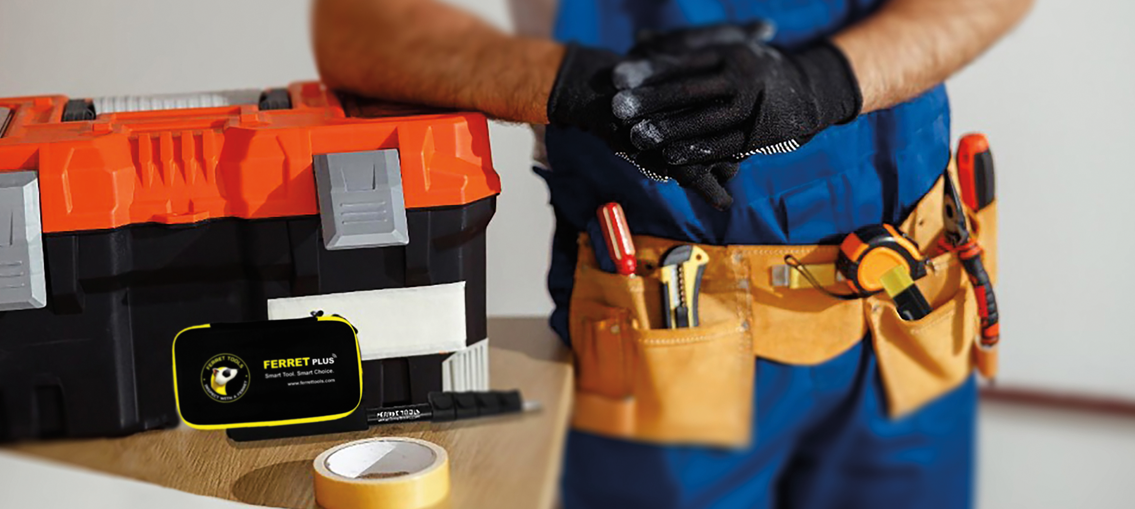The team at Ferret Tools spoke to a few home inspectors to get their take on what you should have available for every inspection.
A home inspection is a crucial process for prospective buyers and sellers to assess a property’s condition. To effectively access hard-to-reach, cramped, or poorly lit spaces, home inspectors rely on a set of essential tools. These tools not only make the job easier and safer but also ensure inspections are conducted efficiently and accurately.
While there are hundreds of tools to choose from, every inspector has their favorites, and the tools they bring may vary. In this article, we will explore some of the vital tools of the trade, including specialty tools, and hear from inspectors about their preferences. Feel free to share your feedback about your essential tools for home inspecting, too.

1. Flashlight
A high-powered rechargeable flashlight is a must-have basic tool for home inspectors. It allows inspectors to illuminate dark corners, attics, basements, and crawl spaces to spot signs of water damage or other problems. We recommend always carrying a spare flashlight and batteries.
2. Adjustable Ladder
A reliable and robust adjustable ladder is essential for inspecting high places like ceilings, roofs, or attics. Investing in a high-quality adjustable ladder is essential for safe and efficient inspections.
3 Screwdrivers
A reliable set of screwdrivers is needed for various uses during inspections. Choose a good quality set to tackle different screw types encountered in a property.
4 Electrical Tester
Electrical testers are vital for identifying electrical hazards and problems. They help inspectors assess the functionality of the electrical system, detect faults, and flag areas of concern for further investigation.
5. Moisture Meter
Moisture meters are essential for detecting moisture in materials like wood, plaster, and concrete. They help identify areas where moisture can lead to issues like mold growth or structural damage. Moisture meters are especially crucial in flood-prone or high-humidity areas, helping inspectors locate water-related problems and determine their source.
6. Gas Detector
A gas detector is a vital tool for checking dangerous levels of natural gas, propane, or carbon monoxide in a home. They help identify gas leaks or hazards that can pose significant threats to occupant health and safety.
7. Inspection Camera
An in spection camera is a key tool for accessing hard-to-reach areas like pipes, ducts, and crawl spaces. It provides visibility in enclosed spaces, especially those with limited lighting. Various types of specialized inspection cameras are available, including borescopes, thermal imaging cameras, endoscopes, sewer cameras, and digital microscopes. Home inspectors may use a combination of these tools to conduct comprehensive inspections and provide detailed reports to clients.

One example of a wireless inspection camera is the Ferret Plus. This camera can be attached to a pole or extendable rod to reach tight and high areas, eliminating the need for ladders in some cases. It also enables you to stay out of cramped areas while it forges ahead, keeping you out of harm’s way during inspections. The Ferret camera links to a free app, allowing inspectors to control the camera, stream high-definition video, and capture images to support reporting. It is lightweight, portable, and fits easily in a tool pouch or pocket.
In conclusion, home inspectors need the right tools to carry out their jobs effectively and accurately. A flashlight, ladder, screwdrivers, electrical tester, moisture meter, gas detector, and wireless inspection camera are among the essential tools for every home inspector. Innovation in this field continues to provide specialized tools that make inspections easier, faster, and safer.
Ferret Tools is a proud ASHI Affliate
Opinions or statements of authors are solely their own and do not necessarily represent the opinions or positions of ASHI, its agents, or editors. Always check with your local governmental agency and independently verify for accuracy, completeness, and reliability.


